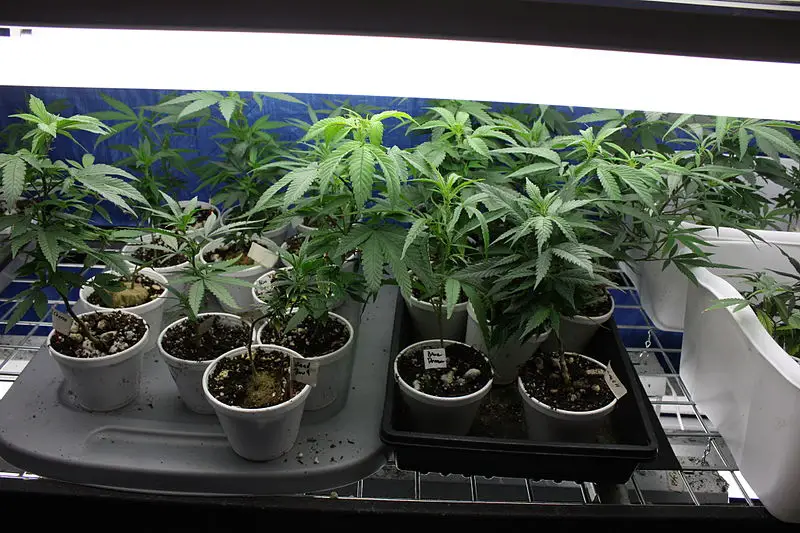Cloning cannabis is a clever way to get more yield of the same quality as your best-ever weed. Once you’ve got the right qualities, you can clone it so that you never run out of your best weed.
Thanks to science, you never have to go through the arduous process of identifying your ideal weed. Cloning gives you the exact copy for your blueprint strain. As a weed grower, many strains pass through your hands, and when you land the perfect breed, you want to retain it for the longest time so that you can produce the highest quality, consistently. Cloning helps you achieve this without grappling with the myriad possibilities of growing from seedlings.
What Is Cloning?
Cloning is the process of producing genetically identical plants. In weed, it is the process of making a duplicate copy of a specific weed plant. It is the easiest and fastest method for weed growers to make many new plants at once. Each clone is a genetic copy of the plant, which means it has the same taste and elicits the same effects.
The process involves taking a cutting from a plant, putting it into an appropriate medium, and letting it root. Theoretically, this process sounds easy, but in practice, it’s not. Cloning weed follows the same process with a few more steps to ensure that the cloning process is successful.
Cloning is a risk-free method of doubling your harvest, but it works best in climates with long growing seasons as clones take root about three months into the season. Also, clones have a high mortality rate, so if you want to double your harvest, plant more of them.
The mother plant mostly remains unperturbed by cloning— sometimes, it improves the mother plant’s growth as it opens it up for superb airflow. Take your cuttings from the lower part of the plant and put to good use the branches that never get enough light.
Why Cannabis Cloning?
Weed usually produces seeds from sexual production that propagates the plant. Each contains its genetic makeup making plants from different seeds have different and unique qualities. Clones, on the other hand, retain the genetic makeup of the mother plant.
Cloning, therefore, is a reliable way to ensure your plants maintain a high quality since they have the same genes as the plant you clone them from. This is good, especially when your weed is for sale, as it maintains your original product’s taste and quality. This includes maintaining THC levels. Evidence has shown that seeds produce weed that is lower in THC than mother plants.
Choosing the Right Cloning Mother Plant
Cloning begins with choosing the right parent plant. It’s what the process is about in the first place—replicating the best qualities of a plant. As a grower, it is advisable to look for particular traits in a plant to determine whether to clone it or not.
The best mother plants to clone should have exotic aroma, sweet and bold flavors, high potency, high resin production, rapid growth, quick flowering, large roots, high yields, healthy buds, and resistance to pests and molds. A plant with all or most of these traits makes a perfect parent for cloning. This would require you to pay attention to your plants as they grow.
Since cloning is best done during the vegetative stage and most of these characteristics are noticeable after full growth, you can clone your plants for several cycles to allow for full growth, helping you pick out those with the best traits, then focus on cloning those.
The Cloning Process
The best cuttings for cloning are taken during the vegetative stage of the parent plant. You can take cuttings during the flowering stage, but your clones risk difficult rooting and consequently a higher mortality rate.
After choosing the plant you intend to clone, you have to prepare it properly. You do this by providing it with 10% less nitrogen a week or two before the cutting. This will increase the chances of the clones rooting. The process of cloning weed involves;
- Choosing the best rooting medium. You can use cotton, coco perlite, potting soil, or Rockwool grow cubes. Make sure the medium you choose is well-aerated and retains moisture.
- Preparing the tools. You will need;
- A healthy mother plant
- A cutting device
- Starter cubes
- Cloning gel or powder
- Lighting—preferrable mild
- A disinfectant
- A propagator
Preparation of tools involves cleaning your hands and setting your gloves ready for use. Disinfecting the cutting device and the working area will minimize the risk of infecting both the cutting and the mother plant with infections from microorganisms in the environment.
- Preparing your medium and rooting gel; since planting should be done immediately after the cutting is done, it is advisable to prepare the rooting medium.
- Selecting a cutting; the best cuttings are from the bottom branches of the plant. Since they receive less light, they are likely to produce smaller buds so cloning them gives them a better stretch at life and productivity. Ensure that each cutting has at least two nodes.
- Making the cut; it should be clean at an angle of 45 degrees below the last node of your cutting. The rationale behind this cut is that it increases the surface area of the rooting, making root development and growth of the clone faster. Once you make the cut, take the cutting and dip it into your rooting or cloning gel before sticking it into your medium. Remove the clone’s bottom leaves, leaving the top fan leaves and the growing tip. Then cut their fingers to reduce water loss through evaporation.
- Placing the clones in a dome; allows you to maintain a high humidity level because the clones absorb water through their leaves as they are yet to develop roots and thus need high humidity. The dome also allows you to keep the clones on a light cycle under low-power fluorescent.
Check on your clones daily. Monitor their general health, water them, and remove the dead ones so that they don’t rot and spread mold to the thriving clones.
Clones take an average of ten to fourteen days to root. Once the roots grow to 3-5 cm long, they are ready for transplanting.
Transplanting the Clone
Transplant the clones in an environment similar to the mother plant to achieve the desirable qualities of the mother plant. When transplanting, work in a sterile environment to avoid infection. Prepare your replanting pots with moist soil beforehand.
Using gloves, gently remove the clones from the medium and replant them in the pots ensuring that the clone’s roots are completely covered. Subject the clone to the same conditions the mother plant was subjected to for best results.
In Conclusion
Cloning is a reliable way to replicate your plant’s best qualities for generations. Some growers have consistently produced the highest quality for over 15 years, thanks to cloning. I hope this short guide will help you when you decide to try your hand at cloning.

